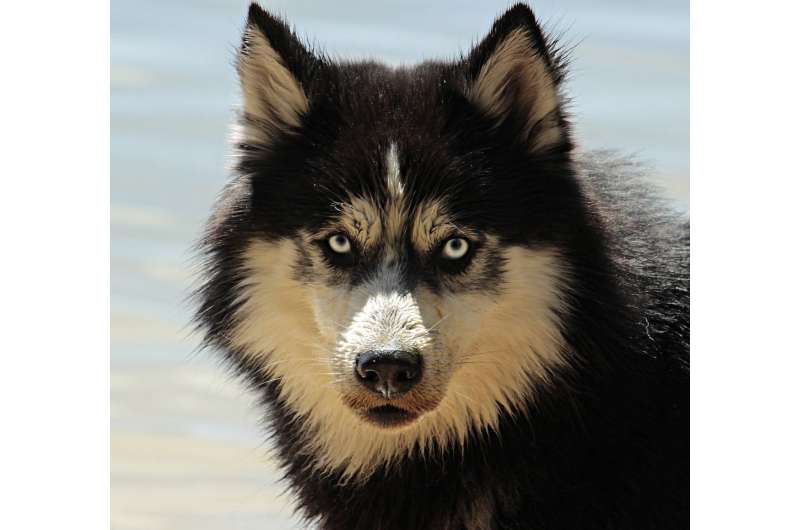October 17, 2018 report
Evidence of dogs accompanying humans to Europe during Neolithic

A team of researchers from across Europe and Israel has found evidence of dogs traveling with people from the Near East to Europe during the Neolithic. In their paper published in the journal Biology Letters, the group describes their genetic study of dogs living in ancient Europe and the Near East and what they found.
Prior research has shown that dogs were living in both the Near East and Europe prior to the Neolithic. They were, in fact, the only domesticated species already present in Europe when the Near Easterners arrived. Now, the researchers in this new effort have found evidence of dogs traveling with people as they moved from the Near East to Europe and subsequently mated with the dogs already living there.
To learn more about the history of dog domestication, the researchers studied 100 mitochondrial sequences obtained from ancient dog remains found in both the Near East and Europe. They used the genetic information they found to trace the lineage of dogs from the Upper Paleolithic to the Bronze Age.
Prior research has also shown that farming began in the Middle East in an area known as the Fertile Crescent. Some of the people of that time stopped being hunter-gatherers and started domesticating animals and growing their own food. Approximately 9,000 years ago, some of those farmers from the Near East began migrating to Europe and Asia, bringing with them samples of crops they wanted to grow such as wheat and barley—and they also brought a host of domesticated animals such as sheep, goats and dogs.
The researchers were able to trace the path of dogs migrating into southeastern parts of Europe along with their human companions. Once there, the evidence showed, the dogs began mixing with local dog populations. They suggest that such evidence shows that dogs were an integral part of the farmer-dog partnership during the earliest stages of agricultural development—likely serving as herding assistants. The researchers note that they also found that the European dog lineage was heavily diluted even before Near East dogs made their way into Western and Northern Europe.
More information: Morgane Ollivier et al. Dogs accompanied humans during the Neolithic expansion into Europe, Biology Letters (2018). DOI: 10.1098/rsbl.2018.0286
Abstract
Near Eastern Neolithic farmers introduced several species of domestic plants and animals as they dispersed into Europe. Dogs were the only domestic species present in both Europe and the Near East prior to the Neolithic. Here, we assessed whether early Near Eastern dogs possessed a unique mitochondrial lineage that differentiated them from Mesolithic European populations. We then analysed mitochondrial DNA sequences from 99 ancient European and Near Eastern dogs spanning the Upper Palaeolithic to the Bronze Age to assess if incoming farmers brought Near Eastern dogs with them, or instead primarily adopted indigenous European dogs after they arrived. Our results show that European pre-Neolithic dogs all possessed the mitochondrial haplogroup C, and that the Neolithic and Post-Neolithic dogs associated with farmers from Southeastern Europe mainly possessed haplogroup D. Thus, the appearance of haplogroup D most probably resulted from the dissemination of dogs from the Near East into Europe. In Western and Northern Europe, the turnover is incomplete and haplogroup C persists well into the Chalcolithic at least. These results suggest that dogs were an integral component of the Neolithic farming package and a mitochondrial lineage associated with the Near East was introduced into Europe alongside pigs, cows, sheep and goats. It got diluted into the native dog population when reaching the Western and Northern margins of Europe.
Journal information: Biology Letters
© 2018 Phys.org


















